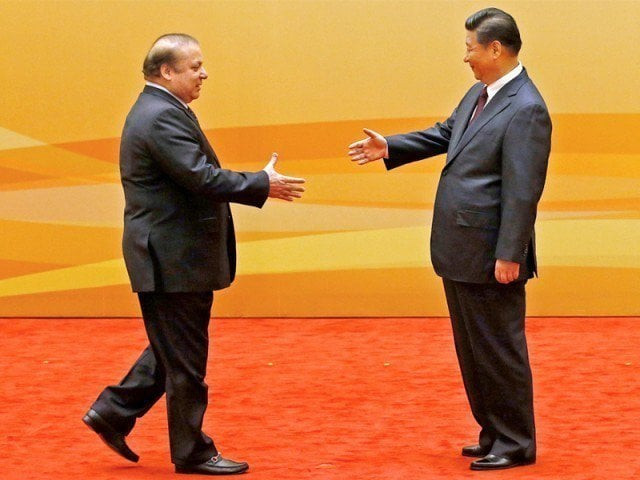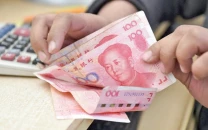Pakistan-China Economic Corridor: a cost-benefit analysis
Greater gain may lie for China via Gwadar as its Maritime Silk Route

PHOTO AFP
Every day, China spends around $18 million on import of 6.3 million barrels of oil as shipment costs from the Middle East, accounting for 80% of its all oil needs, routing through the Strait of Malacca covering a distance of 9,912 miles. By cutting a corridor directly from Kashgar to Gwadar, it will bring these costs significantly down to one-third of the current levels as new distance will be 3,626 miles to Central China, whereas only 2,295 miles till West China.
Even if China were to use PCEC only for 50% of its current level of oil supplies, it will save around $6 million every day, almost $2 billion every year.
It is true that these savings are peanuts to the Chinese economy, however, the greater gain may lie in the strategic outreach via Gwadar as its Maritime Silk Route.
There is another benefit that will accrue to China. As half of Chinese exports are destined on its Western side, it will also gain tremendously by saving on its containerised traffic costs.
China is one of Pakistan’s largest trading partners; the two-way trade exceeded $16 billion last year, marking an annual growth of 12.57%. While our exports to the United States and European Union earn us trade surplus, our imports from Chinese contribute to enlarging the trade deficit.
The Chinese president has promised $46 billion investment to Pakistan and the planning minister has stated that out of that amount, $11 billion has been set aside for infrastructure work on the corridor, while the remaining $35 billion will be directed towards energy projects.
In all likelihood, the $11-billion amount for infrastructure purposes is a Chinese loan whereas the $35-billion investment for the power sector is yet to be converted into a concrete term sheet.
Consider this example. According to the Ministry of Finance, the Executive Committee of National Economic Council, in 2014, approved Karachi-Multan-Lahore Motorway Project – construction of Sukkur-Multan section (387 kilometres) – with a rationalised cost of Rs259.353 billion or $2.59 billion.
Ten per cent cost of the project will come from the Public Sector Development Programme and 90% of the cost as credit financing through the government of China. This will be part of PCEC.
In the form of PCEC, Pakistan will acquire a new asset in terms of infrastructure. However, it has to first mobilise its own industry and trade sectors to make the best use of the corridor. Else, it will be a road and pipeline largely meant for Chinese business – on Pakistan’s taxpayers’ cost – and now protected by the Pakistan Army on our cost.
The term-sheet for Chinese investment in the power sector does not seem very promising at the moment. The federal government’s sovereign guarantee has been called in several times by IPPs over the last few years. The Chinese may not give it its due value.
The next alternative for them as a guarantee is a revolving letter of credit backed by the government. That is almost a non-starter for the government as it will imply special privileges to Chinese investors and no bank can offer revolving letter of credit for the life cycle of a power project, running over decades. The government should refuse such requests.
What Pakistan needs to do?
If Pakistan cannot overcome its power crisis, and prepare a trade-centric economic vision, we stand to benefit little from PCEC in terms of additional business opportunities apart from temporary jobs. One scenario for our planning and finance ministers is to consider imposing a toll tax on Chinese oil shipment and trade traffic. Another possibility is to negotiate infrastructure projects on the basis of build-own-operate-transfer instead of an outright loan.
China needs us. Pakistan should embrace this huge opportunity with a pragmatic, and business-like cost-benefit analysis instead of confounding this transaction with metaphors of oceans, mountains, honey and now iron. It’s about hard cash which the finance minister badly needs for the country. We should not leave too much cash on the Chinese Wall.
The author is the Executive Director of PRIME Institute, an independent think tank based in Islamabad
Published in The Express Tribune, May 4th, 2015.
Like Business on Facebook, follow @TribuneBiz on Twitter to stay informed and join in the conversation.



















COMMENTS
Comments are moderated and generally will be posted if they are on-topic and not abusive.
For more information, please see our Comments FAQ